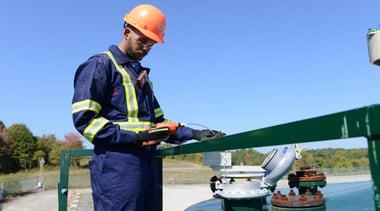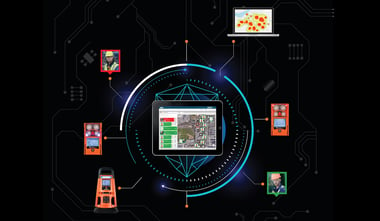Safety professionals have the weight of the world on their shoulders these days. On top of traditional safety challenges, major changes to operations thanks to COVID-19 mean traffic patterns across your site are different. With some employees working from home and others working on site under new conditions, it’s harder than ever to keep your finger on the pulse.
Thankfully, we live in an era of connectivity. When change creates challenges, connectivity offers a simple solution.
Just like in your personal life, having critical worker and site safety information at your fingertips is a great place to start—after all, the first step to solving a problem is knowing you have one.
Access to Insights
Connected industrial internet of things (IIoT) devices, like gas detectors, can be paired with live monitoring software give you real-time insights on what’s happening across your site, from hazardous gas levels and device health to worker status and location.
Adding connected gas detectors and live monitoring to your gas detection program gives you access to the information you need to stay connected to your site – no matter where, no matter what. All you need is a connected gas monitor and live monitoring software. With this connectivity, you can gain total visibility into your operations and receive instant text or email alerts when something goes wrong. In an emergency, you can respond quickly and effectively with alerts that include worker name, location, and alarm status. You’ll always know when workers need you.
But connected doesn’t mean complicated. New connectivity options for gas detectors, like cellular LTE-M technology, can link you and your workers without complicated setup or IT involvement. By using reliable, nationwide cellular towers for worker connectivity, you have one less thing to manage on your site.
Future-proof cellular LTE-M connectivity, designed specifically for industrial IoT applications where reliability is critical, ensures your workers stay connected. While other connected monitors use outdated 3G technology, Industrial Scientific’s Ventis Pro5 Multi-Gas Monitor connects workers through LTE-M, ensuring that your investment lasts for years to come.
See Cellular Connectivity in Action
On a typical workday, a connected worker program might look like this: Mike starts his shift and heads to the tool room to pick up a cellular enabled Ventis Pro5. He taps the monitor to his iAssign tag, and it registers his name to the device. Next, Mike heads toward the tank he’s assigned to inspect and his monitor registers his location. While taking the sample, Mike’s gas monitor detects high levels of H2S and goes into alarm. Mike’s name, location, and gas hazard data are instantly transmitted from his monitor to live monitoring software via cellular connectivity, and you receive a text message with that information. You confirm that Mike is safe by using two-way text messaging and check your site map to see that Mike has evacuated the danger zone. Once you know Mike is safe, you follow-up on the alarm to find the source of the H2S and prevent similar incidents in the future.
Streamline Equipment, Prioritize Maintenance, Save Money
While emergency response gets all the attention when it comes to connectivity and live monitoring, there’s another crucial benefit: access to site safety and productivity trends. With real-time safety data, you can investigate incidents in the moment rather than days or weeks later, then prioritize maintenance so you can avoid costly downtime.
Traditional live monitoring solutions require additional equipment to support connected gas monitors. But by using cellular connectivity you can avoid this extra cost. For plants that already use Ventis Pro5 monitors, there’s no need to train workers on new instruments. You can train workers on one multi-purpose gas monitor and reduce the risk and investment of having different devices in the field.
Learn more about cellular connectivity for the Ventis Pro5.



